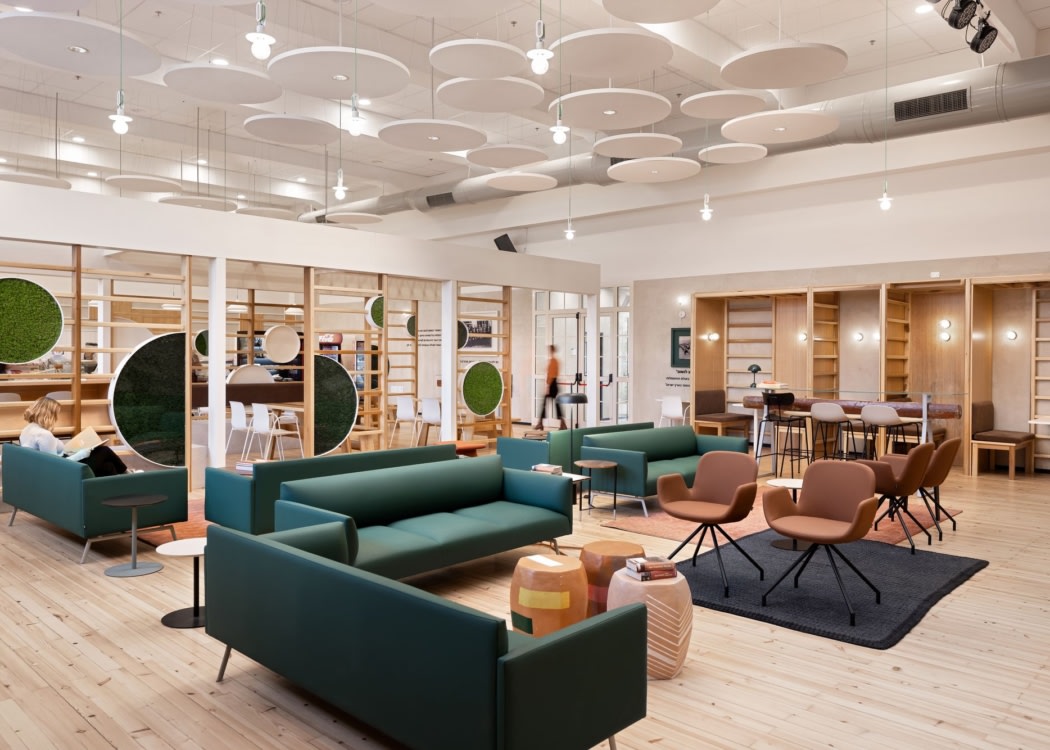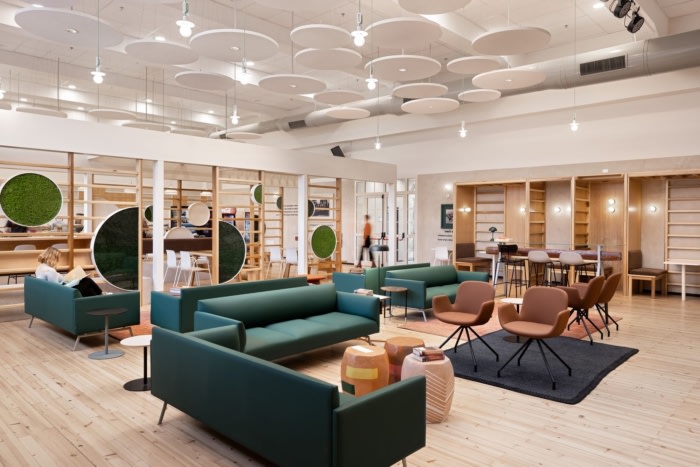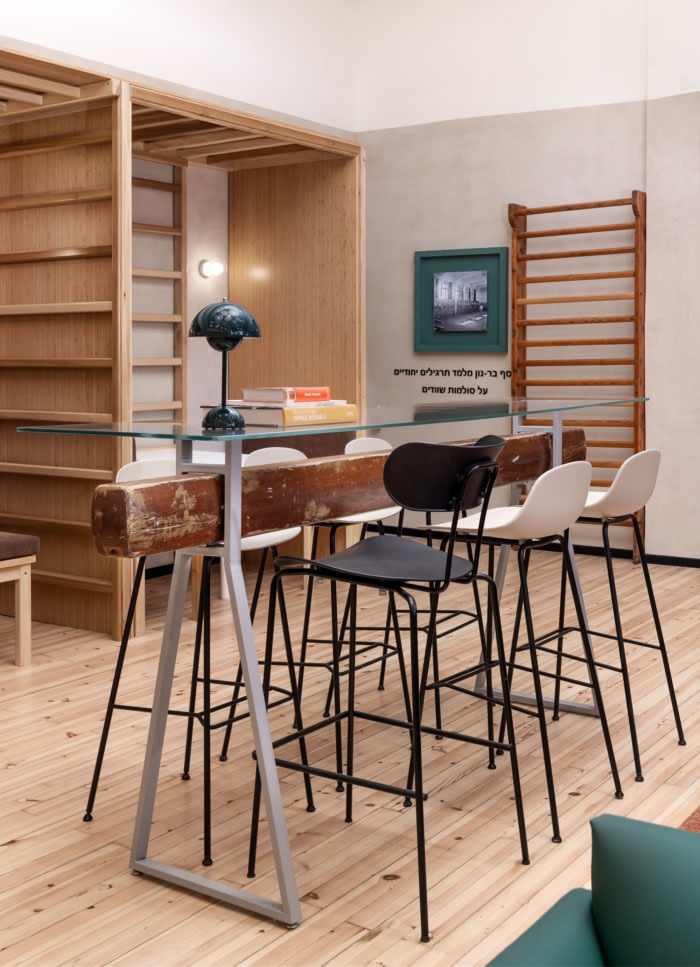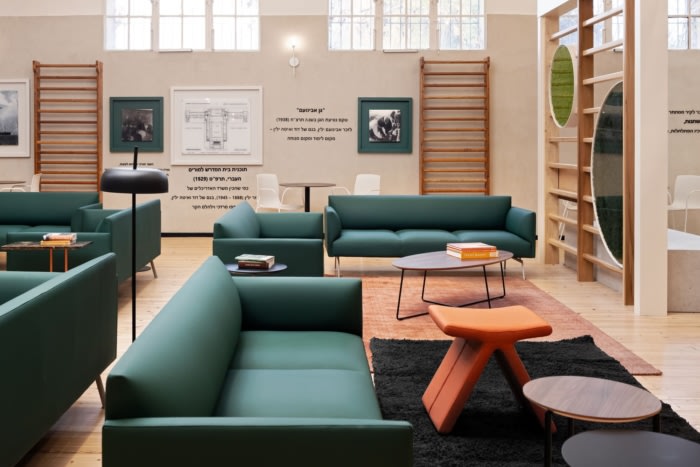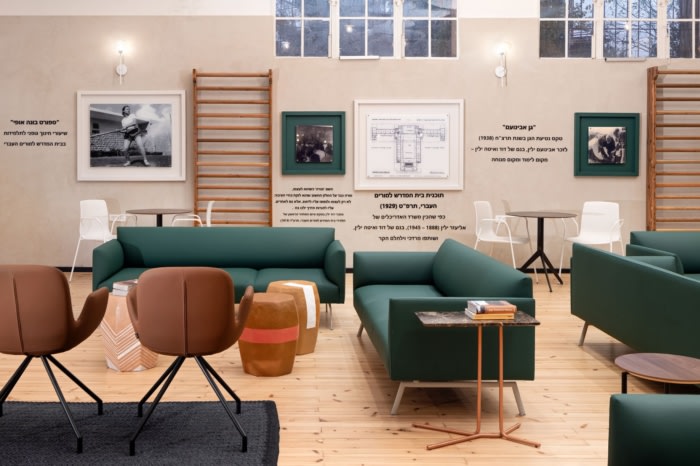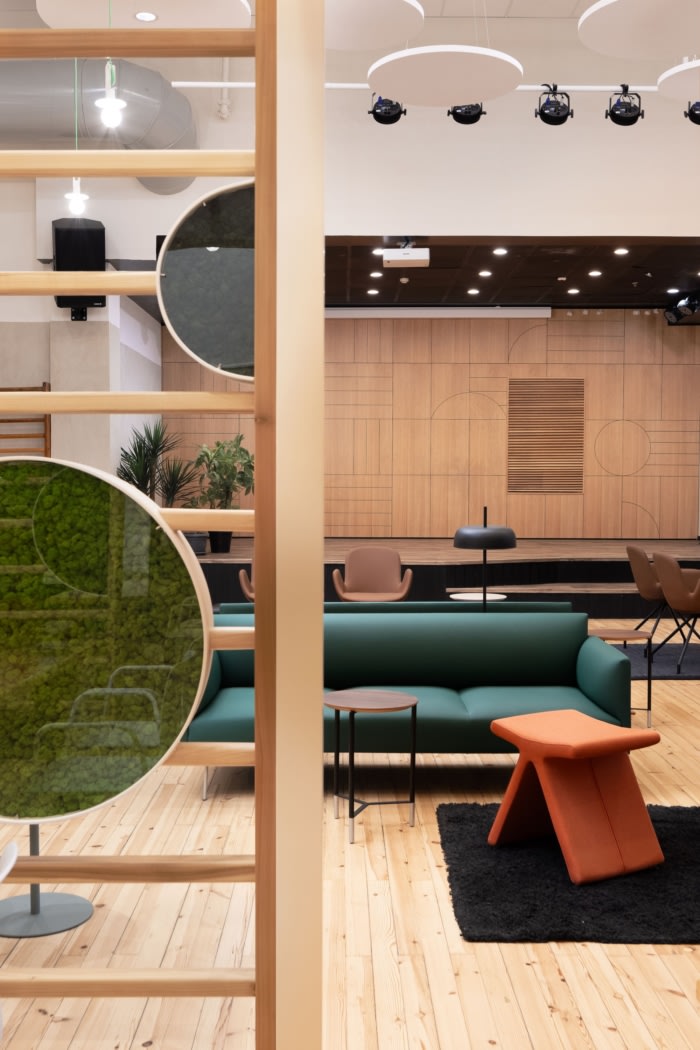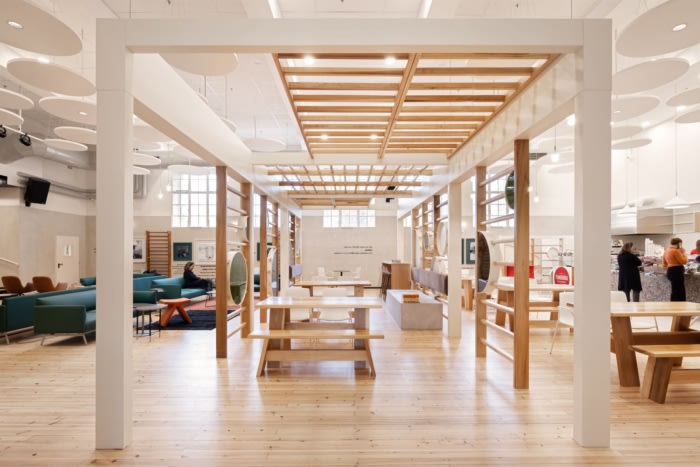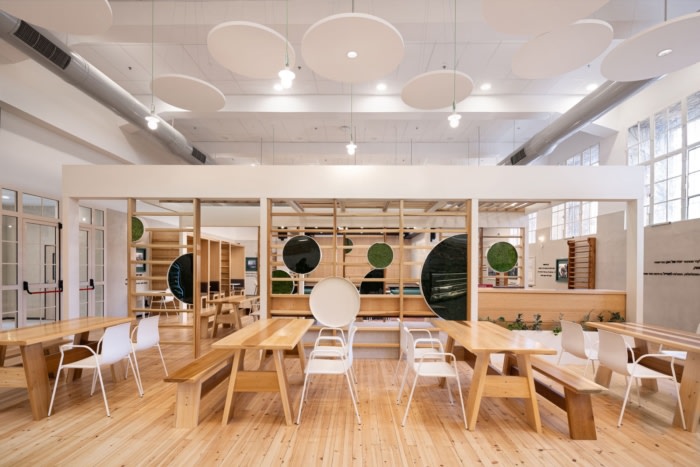David Yellin Academic College of Education – The Lounge
Edit Abu Interior Design completed the lounge for David Yellin Academic College of Education in Jerusalem, Israel.
A homely, warm and welcoming facade, which offers a trip through a variety of possible scenes of activities and history, for the student crowd and users, defines the new lounge hall, which previously operated as a gymnasium.
The lounge – which is the name that has been chosen to represent the collaborative space that we have just finished renovating, for the large student body and users at the David Yelin Academic College. In the past, it was the historic gymnasium, which was designed as part of the “Beit Midrash for Teachers” in Jerusalem, the training school for teachers, in 1929, and was used by the students of the Midrasha in physical education classes. Today, the Beit Midrash for teachers is the David Yelin Academic College, which is considered one of the best in Israel for teacher training in the various tracks.
Just before the outbreak of the corona virus, the college’s management of the place made a brave decision to breathe life into the historic gymnasium that ceased to operate approximately a decade ago and transform it into a living and breathing cultural center, serving a wide variety of activities, for the college attendees. The historic building was converted into a collaborative workspace, while carefully maintaining the delicate dialogue between the historical outlines established in the place and the contemporary reality that dictates its relevant needs for the student body.
The historic structure carries with it cultural and architectural value, which establishes it as a heritage asset in the history of the settlement and existence in the Land of Israel. The transformation of the building into a collaborative work space for the general public required maximum sensitivity in its design as an innovative space, while maintaining the existing architectural language and creating a place of honor for the extensive historical milestones of the place. The combination of all this, while preserving original objects from the period of the hall’s activity, creates a meticulous and elegant design language that unifies the past and the present. The name “The Lounge” was given to the structure as part of the design language that aims to produce the latest interpretation of the historic gymnasium into a central aesthetic display area, in a corporeal and invaluable way that allows accommodation for flexible and diverse activities, both educational and cultural, while nurturing and emphasizing the WELLBEING of the student body.
The physical location of the gymnasium, which sits in the heart of the main structure of the college, is an equally important strategic location, as it sits on a main traffic axis in Jerusalem. Its southern side faces the inner patio garden, and its northern side faces the natural woodland garden, which surrounds the entire college.
The management’s prerequisite was to create a place that would convey a sense of calm and relaxation for the student body, concurrent to experiencing the historical narrative alongside holding different types of activities: from the operation of the cafeteria in a defined and fixed place, through the loitering of individuals and groups in diverse, changing and fixed work environments, to cultural meetings that include lectures, meetings of writers and creators as well as shows.
The creation of the design language was based on original elements and objects that were present in the gym from the beginning of its activity to present day. Among them, the Swedish ladder, the wooden bench, and the gymnastic beam, which were key to both a modern design interpretation and to the preservation of the elements as they are and their integration as unique pieces of furniture and carpentry.
To enable the existence of diverse activities side by side, the hall is divided into two main activity centers: the cafeteria area at one end and a relaxed seating area that combines cultural and learning activities at the other end. The definition of the two centers of activity was supported by a pergola avenue, being rather dominant in its presence, and is located at the center of the hall and enables the gradual transition between the two areas, while offering an additional loitering area. The pergola avenue has additional value, as it creates an axis for movement, physically and conceptually connecting the patio garden located on the southern front of the college and the woodland garden located on the northern front of the building. The pergola avenue was designed as a permanent and independent structure that gives a feeling of privacy and intimacy to those who loiter there. This feeling comes from a composition of partitions that combine the shape and rhythm of the Swedish ladder, and circles of natural moss vegetation.
Design: Edit Abu Interior Design
Contractor: M.Partners Building & Development
Furniture: Pitaro
Photography: Shai Epstein

